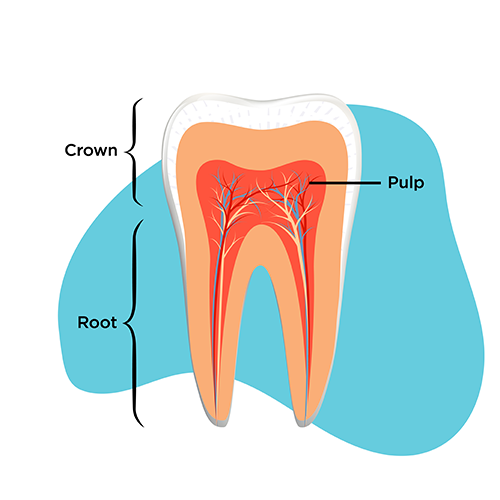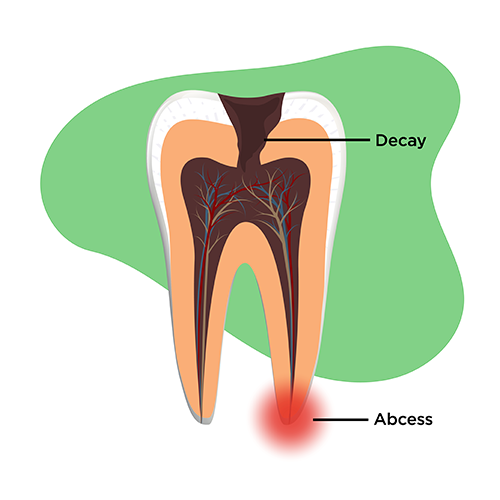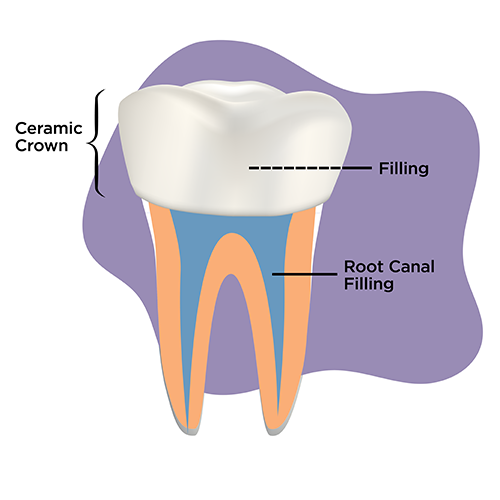May is Root Canal Awareness Month.
A common question dentists hear from patients is, “What is root canal treatment, and is there another option?”
There is no easy answer to this question, but generally, when a dentist determines that a root canal is necessary, there are two options:
- Proceed with the recommended root canal.
- Have the tooth extracted.
Let’s look into the reasons for root canal treatment and explain the process.

The healthy tooth
A healthy tooth consists of the crown (portion visible above the gums) and the root (portion not visible and embedded into the jawbone). In the center, there is the pulp, which contains the nerve and blood supply. In a healthy tooth that has no cracks or injuries, the nerve and blood supply are protected by the surrounding structure (enamel and dentin).

The affected tooth
When the structure surrounding the pulp becomes decayed or fractured, then the tooth may become sensitive. A tooth can be damaged in various ways that cause the pulp to become hyper-sensitive, or the nerve to the tooth could die and develop an infection. This infection can cause the cheek to swell and also destroy the bone that stabilizes the tooth within the jawbone. Your dentist will diagnose the cause of the discomfort you are feeling or they may notice this situation when you have no pain or discomfort.
Sometimes the tooth cannot be restored with a routine filling or a crown, so a root canal is needed to keep the tooth. Otherwise, the tooth will need to be removed.

Root canal treatment
Oftentimes, the dentist may recommend a specialist for root canal treatment. The specialist will be an endodontist who has completed special training and limits their practice to root canals only. During a root canal, the endodontist will remove all the tissue from the canal space where the nerve and blood supply were located. The canal space will then be disinfected and replaced with a special filling material that prevents reinfection and allows the patient to keep the tooth in their mouth.
After a root canal is performed, the tooth will have an opening into where the pulp was. The tooth will need to have a filling placed in this opening. Then, in most cases, a crown will be placed on the tooth to keep it healthy.
If you are experiencing any tooth pain or swelling, be sure to visit your dentist to have the problem looked at as soon as possible.
This information in this post is for general educational purposes only and does not warrant or represent any information as related to health as specifically appropriate for you. It is not intended to be medical advice or replace the relationship that you have with your health care providers. You should always seek medical advice on any diagnosis or treatment from a qualified health care provider. The information is provided “as is” without any representations or warranties, express or implied.






